This fortnight in Room 101, I've been fortunate enough to track down Richard Freeman of the Centre for Fortean Zoology (CFZ) for a special two-part interview. Here in Part I, we'll be discussing cryptozoology, from a number of angles, including looking at such infamous beasties as Alien Big Cats, the British Bigfoot, the Tasmanian Wolf, the Almasty, Yeti, and the Chupacabra. In part II (which will be featured in my new column here at BoA Sci-Fi Worlds) we'll be exploring the 45 year long relationship between monsters and Doctor Who.

Richard Thomas: First things first, thank you very much for giving us the time to answer these questions. I really appreciate it and I'm sure our readers will too.
In hindsight, how do you think you first became interested in cryptozoology and other Fortean type subjects? Richard Holland (editor of Paranormal magazine) and Nick Redfern both tell me you're a "huge" Doctor Who fan, would I be wrong in thinking that, like me, a childhood obsession with the classic series played a big part?
Richard Freeman: Yes, you would be right. I grew up in the Jon Pertwee era and, because he was incarcerated on Earth by the Time Lords, the monsters the third Doctor faced seemed more compelling and real. A monster in your back yard is more frightening than a monster on some alien planet. Doctor Who oozed menace and weirdness in a way no other show has before or since. Giant maggots exploding out of Welsh slag heaps, killer dolls animated by an alien will, super evolved marine dinosaurs, you wouldn't get stuff like this in Star Trek. This sparked my interest in monsters.
| 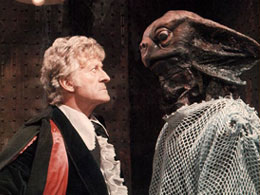 |
Richard Thomas: I understand you're the "zoological director" for the Centre for Fortean Zoology (CFZ). What exactly does the CFZ do and how did you become involved with it?
Richard Freeman: The Centre for Fortean Zoology is the only full time scientific organisation dedicated to cryptozoology, the study of unknown species of animal. I came upon a copy of the society's journal Animals & Men in the now defunct Potter's Museum of Curiosities in Cornwall. I started to write for them, became the Yokshire rep then, after I finished my zoology degree, I was invited down to work with them on a perminant basis.
Richard Thomas: As a cryptozoologist who has written and lectured widely on the subject, aside from ABCs and the British Bigfoot (which we will discuss later), what are some of the "mystery animals" you are convinced are probably real?
Richard Freeman: The thylacine or Tasmanian wolf, a striped, dog like, flesh eating marsupial. The thylacine was supposedly hunted into extinction in the mid 1930s but there have been over 4000 sightings since then, some by zoologists and park ranger. There have also been a couple of film sequences that I have seen analysed frame by frame. I have no doubt this creature is still around.
| 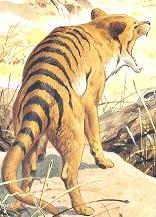 |
The giant anaconda. This snake gives birth to live young rather than laying eggs. Ergo it has severed its last link with land and can spend 99% of its time in water. Thus buoyed up, it can reach huge sizes, perhaps as much as 60 feet!
Orang-pendek, an upright walking ape from Sumatra. Debbie Martyr, head of the Indonesian Tiger Conservation Group has seen it four times. It is probably related to the orangutan but adapted for a bipedal existence on the forest floor.
The yeti, possibly a surviving form of the giant ape Gigantopithecus blacki that lived in China and India 500,000 years ago. Hair has been analysed in the UK, USA and China. The results were the same: unknown primate.
| 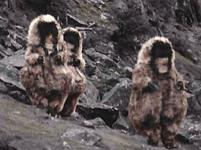 |
The Almasty, a relic hominid, an ultra primitive kind of man, it has no fire and only ape-like tool use. I know two scientists who have seen this creature and I think I came within 12 feet of one last Summer on a derelict farm in Russia at 2.30 am.
Dragons, the original uber monster. Found in every culture and dating back at least 25,000 years in cave paintings. Still seen today in parts of Asian and Africa and the worlds oceans. Possibly the descendant of a group of prehistoric seagoing crocodiles. World wide the dragon is more associated with water than it is with fire.
Richard Thomas: Likewise, are there any of these alleged cryptozoological creatures that you think are just modern day myths or simply a product of peoples' imaginations?
Richard Freeman: Surviving dinosaurs can be explained by other animals. The suropod reports by an unknown species of giant, semiaquatic monitor lizard in both Africa. The Tyrannosaur like reports in New Guinea and Australia are probably giant monitor lizards rearing up onto their hind legs. The supposed horned dinosaur in Africa is probably a species of rhino.
|  |
Richard Thomas: My younger sister actually had an ABC (Alien Big Cat) sighting here in Wales. What are your thoughts on the "big cats" seen in Britain? Do you think they're simply flesh and blood animals or do you think in some cases something far stranger could be happening?
Richard Freeman: There is no doubt big cats are alive and well in the UK. A female puma was captured in Inverness in 1980. These are descendants of escapees and deliberate releases. Until the Dangerous Wild Animals act anyone could keep anything as a pet and up till the early 1980s an old duffer could start a zoo in their back yard! The nucleus of the current ABC population in the UK was from these irresponsible people.
Richard Thomas: Neil Arnold has written
Monster! - The A-Z of Zooform Phenomena, a truly unique book about: "a void of creatures which clearly aren't flesh and blood, yet which cryptozoology and the paranormal realm attempts to file, and yet ... fit into neither." What are your thoughts on "Zooform" phenomena?
Richard Freeman: Zooform phenomena may have something to do with the human mind. There is a global monster template of archetypes that are found all over the world. Dragons, hairy giants, little people, big cats, monster dogs, monster birds. These all have analogues with creatures that would have been preying on or competing with our primitive ancestors on the plains of East Africa three million years ago. Crocodiles, pythons, larger and smaller primate species, leopards and lions, hunting dogs, large raptors like the martial eagle. I think we carry these beasts as fears or fossil memories in our collective subconscious. At certain times they can become externalised and take on a quasi-solid form for a while.
| 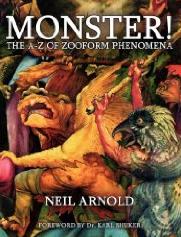 |
Richard Thomas: Nick Redfern has written a book with the interesting title Man-Monkey: In Search of the British Bigfoot. What do you think the likelihood of such a creature in the UK really is and, perhaps more interestingly, what do think it could be? For instance, do you think we're dealing with some kind of missing link or something else entirely?
Richard Freeman: There is no way a species of giant ape could live undetected in the UK. You would need a population to carry the species on and there is just not enough room. The UK is not like Canada or Tibet, a real ape or hominid would have been discovered decades ago. I think what people are seeing are zooform creatures.
Interestingly though, relic hominids may have lived on mainland Europe until relatively recently. The trolls of Scandinavia sound very like them and as recently as the 1980s a hominid was reported from western Russia only 15 miles from the borders of Finland.
| 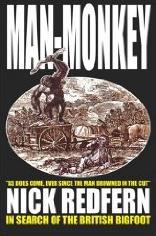 |
Richard Thomas: The Chupacabra of Latin America is probably the strangest cryptozoological type creature I've heard of and think just might actually exist. What are your thoughts on the Chupacabra? Do you think we're dealing with something extraterrestrial or something much more mundane?
Richard Freeman: My colleague Jon Downes has investigated the Chupacabra in Puerto Rico. He concluded that most of the attacks on livestock were done by imported mongooses as well as feral dogs. He thinks that the spiny backed beast reported from the area is an unknown species of new world porcupine.
| 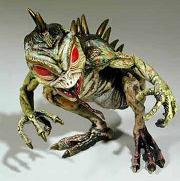 |
Richard Thomas: Have you got any books or anything coming out soon? Maybe a new case or something has grabbed your attention recently?
Richard Freeman: I have two books out currently Dragons: More Than a Myth? from CFZ Press and Explore Dragons from Heart of Albion. Later this year my new book, The Great Yokai Encyclopaedia: an A to Z of Japanese Monsters is out from CFZ Press. I have become enthralled with Japanese folklore. They have the weirdest monsters on Earth including a giant man eating sea cucumber that grows from the knickers of a girl, a giant flesh eating rabbit that digs up human bodies to eat their livers, and a flaming pig that steals hunan genitals. Fortunately most of these are purely imaginary.
Richard Thomas: Thanks again, I'm looking forward to doing part II of this interview with you for my other BoA column
Sci-Fi Worlds. There we can go more in-depth about our shared obsession with
Doctor Who.
Richard Thomas, BoA UK Correspondent and Columnist.
Sources:
www.cfz.org.uk
